Partager
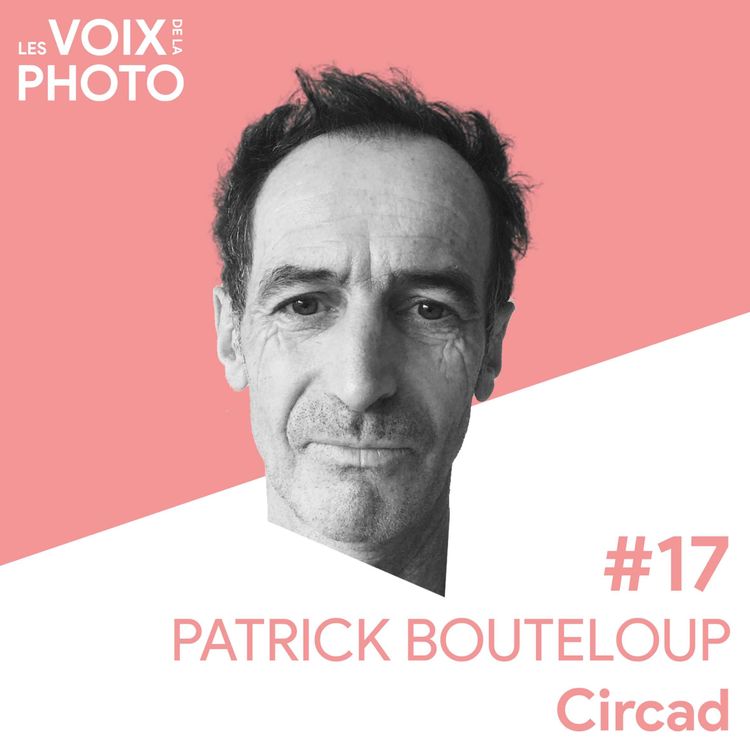
Les Voix de la Photo
#17 Patrick Bouteloup (Circad)
Saison 1, Ep. 17
•
Patrick Bouteloup, passionné du tirage photographique, revient sur les origines de Circad. Fondée pour encadrer et accrocher des photos pour Robert Delpire au Centre National de la Photo, la société est constituée aujourd'hui d’une dizaine de personnes. Il nous explique les évolutions de l'encadrement et ses étapes de fabrication, liées aux changements de formats et techniques. Véritable artisan passionné, il profite de cet épisode pour lancer un appel afin de trouver la relève. A bon entendeur !
____
Vos retours sont très importants pour améliorer ce podcast donc n'hésitez pas à m'envoyer vos questions, remarques et suggestions.
Pour me contacter : @lesvoixdelaphoto (instagram) ou lesvoixdelaphoto@gmail.com
More episodes
View all episodes

66. [REPOST] #66 Michel Poivert (Historien chercheur)
51:56||Saison 1, Ep. 66Abonnez-vous à ma Newsletter-> Newsletter les Voix de la Photo-> Il s'agit d'une rediffusion d'un épisode posté en 13 juillet 2022.Le professionnel que nous écoutons dans cet épisode ne vous est sûrement pas étranger. Michel Poivert est historien-chercheur en histoire de la photographie et vous avez pu croiser son travail au travers d’un livre, d’une exposition ou d’une conférence. Dans cet échange, nous sommes revenus sur son métier d’enseignant-chercheur en histoire de la photographie et sur les différents courants de pensée dans cette discipline, mais aussi l’organisation de ses projets : la recherche, l’enseignement et le développement de projets lié à ses sujets de recherche (expositions, livres …). Nous avons aussi abordé un projet ambitieux qui lui tient particulièrement à cœur : le Collège Internationale de photographie qui a pour ambition de mettre en relation la création expérimentale, les savoir-faire des métiers de la photographie et le grand public. Bonne écoute !1’50 – Sa formation d’histoire de l’art et la rédaction d’une thèse sur les rapports entre la peinture et la photographie07’30 – Les évolutions de son métier d’enseignant-chercheur en histoire de la photographie10’20 – Comment enseigne-t-on l’histoire de la photographie en fonction des pays14’30 – L’articulation de ses projets : la recherche, l’enseignement et le développement de projets liés à ses sujets de recherche (expositions, livres …) et la question du réseau professionnel 25’ – Le projet du collège international de photographie : une structure mettant en relation la création expérimentale, les savoir-faire des métiers de la photographie et le grand public36’30 – Les évolutions dans le milieu de la photographie44’ - Le politique nous a fait croire que la photographie est un art démocratique, que c’est simple et facile. Les images ce ne sont pas toujours des photographies. Abus culturel de langage de confondre image et photographie49’ – Ses conseils : Se donner du temps, car le risque en photo c’est la surproduction. Ne pas faire des belles images, mais de la photographie.Le LinkedIn de Michel Poivert : https://www.linkedin.com/in/michel-poivert-4b949b37/L'Instagram de Michel Poivert : https://www.instagram.com/michelpoivert/Pour devenir partenaire du podcast : https://bit.ly/sponsoriserLVDLPPour vous inscrire à la newsletter du podcast : https://bit.ly/lesvoixdelaphotonewsletterLe site du podcast : https://lesvoixdelaphoto.fr/Et vous pouvez retrouvez le podcast sur Instagram, Facebook et LinkedIn @lesvoixdelaphotoLes Voix de la Photo est un podcast produit et réalisé par Marine Lefort.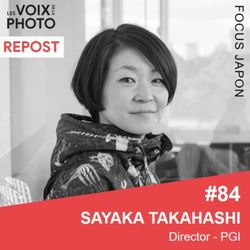
84. [REPOST] #84 Sayaka Takahashi (PGI) ENGLISH EPISODE
21:48||Saison 1, Ep. 84Abonnez-vous à ma Newsletter-> Newsletter les Voix de la Photo-> Il s'agit d'une rediffusion d'un épisode posté le 6 juin 2023.PGI in Tokyo is the second-oldest photography gallery in Japan and in this episode, the actual director of this gallery, Sayaka Takahashi explains to us the evolution of her work as a gallerist for 20 years. When she started her main thought was to attract more people to come to the gallery and now she participates in photo art airs such as AIPAD in NY, portfolio reviews and organized talks. One of her new goals is to sell the work of the artists represented by the gallery to the right institutions. I hope you will like this second episode in English! 1’30- Her studies at Waseda University in Literature with her professor and photography critic Osamu Hiraki, her work experience at the Higashikawa International Photography Festival in Hokkaido and her encounter with Hiroaki Yoshino, the director of PGI Shibaura.3’30- PGI is a gallery specializing in photography with a labo for preservation and framing. She started to work for PGI as a part-timer in 1998 and became the director in 2010. When he was 18 years old, she heard about the “Onnanoko Shashin” movement (Onnanoko means female and shashin photography) and she was inspired by these female photographers.8’ – PGI opened in 1979 as a place to look at the physical print. The first commercial photo gallery in Japan is Zeit-Foto Salon which was owned by Etsuro Ishihara and PGI was the second one. The owner of the PGI studied medicine in California and met the photographer Ansel Adams here and he decided to open a gallery when he was back in Tokyo.10’- When she started as a gallerist her main thought was how to get more people to visit the gallery. They did 10 exhibitions per year, and now 6/8. They started to hold gallery talks, participate in portfolio and events to meet emerging artists, and participated in photo fairs (Tokyo Photo and AIPAD from 2013). After participating in AIPAD, now she has a new goal to place the work of the artists she works with within the right institutions. She learned a lot about photography when speaking with other dealers during AIPAD.13’34 – In 2022, she sold the work “The map” of Kikuji Kawada to the Museum of Fine Arts, Boston (an exceptionally large collection of negatives, contact sheets, 87 prints from 1989, plus vintage prints and a first edition from 1965 of the photographic book).15’ – Another example of a project is the exhibition and the book of Tokuko Ushioda “My Husband” which were released in 2022.20’- Her pieces of advice for young gallerists are to stay curious and interested in artists and to know their works perfectly to be able to introduce their works to more people.PGI website : https://www.pgi.ac/en/Pour devenir partenaire du podcast : https://bit.ly/sponsoriserLVDLPPour vous inscrire à la newsletter du podcast : https://bit.ly/lesvoixdelaphotonewsletterLe site du podcast : https://lesvoixdelaphoto.fr/Et vous pouvez retrouvez le podcast sur Instagram, Facebook et LinkedIn @lesvoixdelaphotoLes Voix de la Photo est un podcast produit et réalisé par Marine Lefort.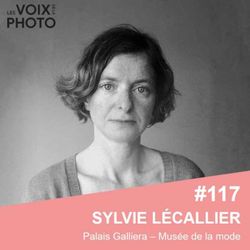
117. [BEST OF] #117 Sylvie Lécallier (Palais Galliera)
05:12||Saison 1, Ep. 117-> Cet épisode est l'extrait d'un entretien. Vous trouverez l'entretien entier sur ce même compte.Sylvie Lécallier, responsable de la collection photographique au Palais Galliera, revient sur son parcours, de ses études à Arles à la gestion de collections photographiques. Elle nous parle des évolutions dans les pratiques muséales, des étapes de création d’expositions, comme celle dédiée au photographe de mode Paolo Roversi en 2024, et partage ses conseils pour travailler dans le département photo d’un musée et pour les photographes de mode. Bonne écoute !Le LinkedIn de Sylvie Lécallier : https://www.linkedin.com/in/sylvie-l%C3%A9callier-481aa9b0/Le site du Palais Galliera : https://www.palaisgalliera.paris.fr/Pour devenir partenaire du podcast : https://bit.ly/sponsoriserLVDLPPour vous inscrire à la newsletter du podcast : https://bit.ly/lesvoixdelaphotonewsletterPour suivre l'actualité du podcast : https://lesvoixdelaphoto.fr/Et vous pouvez retrouvez le podcast sur Instagram, Facebook et LinkedIn @lesvoixdelaphoto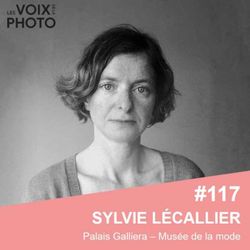
117. #117 Sylvie Lécallier (Palais Galliera)
56:50||Saison 1, Ep. 117Sylvie Lécallier, chargée de la collection photographique au Palais Galliera, revient sur son parcours, de ses études à Arles à la gestion de collections photographiques. Elle nous parle des évolutions dans les pratiques muséales, des étapes de création d’expositions, comme celle dédiée au photographe de mode Paolo Roversi en 2024, et partage ses conseils pour travailler dans le département photo d’un musée et pour les photographes de mode. Bonne écoute !3’45 – À 20 ans, Sylvie Lécallier est encouragée par le photographe Marc Riboud d’intégrer l’école d’Arles malgré un parcours initial en lettres classiques.5’50 – Sa découverte des métiers de la conservation photographique durant ses études à Arles. Elle réalise qu’elle souhaite être passeur et valoriser les images plutôt que de les produire.7’00 – Sa première expérience professionnelle grâce à une bourse de recherche sur des collections photographiques conservées par le ministère de la Culture.8’45 – Ses expériences multiples au musée Galliera, puis à la bibliothèque nationale des Ponts et Chaussées où elle inventorie des albums photographiques du 19ᵉ siècle.18’00 – Son arrivée au Palais Galliera grâce au legs du photographe Henri Clarke en 1998.23’10 – Présentation du Palais Galliera en tant que musée de la mode, avec une collection de 40 000 costumes, accessoires, dessins et photographies.34’00 – Étapes de création d’une exposition au Palais Galliera, illustrées par celle dédiée à Paolo Roversi en 2024. La première du musée avec un artiste vivant.46’40 – Les évolutions dans l’organisation des expositions : des équipes plus nombreuses et professionnelles, permettant des échanges en amont et une meilleure coordination.48’30 – Conseils pour travailler dans un musée : être passionné par son sujet, vouloir partager ses connaissances, et apprendre sur le terrain.50’30 – Conseils pour les photographes de mode : suivre sa propre vision, éviter de produire des images normées, et ouvrir son regard en explorant des domaines hors de la mode.53’00 – Importance des dons dans l’enrichissement des collections : des contributions Le LinkedIn de Sylvie Lécallier : https://www.linkedin.com/in/sylvie-l%C3%A9callier-481aa9b0/Le site du Palais Galliera : https://www.palaisgalliera.paris.fr/Pour devenir partenaire du podcast : https://bit.ly/sponsoriserLVDLPPour vous inscrire à la newsletter du podcast : https://bit.ly/lesvoixdelaphotonewsletterPour suivre l'actualité du podcast : https://lesvoixdelaphoto.fr/Et vous pouvez retrouvez le podcast sur Instagram, Facebook et LinkedIn @lesvoixdelaphoto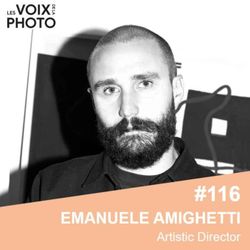
116. [BEST OF] #116 Emanuele Amighetti (Artistic Director) ENGLISH EPISODE
07:50||Saison 1, Ep. 116-> This episode is an extract from an interview. You will find the entire interview on this same account.In this episode, we talk with Emanuele Amighetti, an italian creative director whose journey began in Como, Italy, influenced by a love of punk music and literature. Initially studying classical and Middle Eastern studies, he transitioned to photography, telling stories of marginalized communities. After working with international press, he moved into art direction, collaborating with his wife and embracing new media. We discuss his time at Esquire and Hearst, his creative process, and the evolving challenges in photography today. He is now the Executive Image Director at Harper’s Bazaar Italia. Enjoy listening!Emanuele Amighetti's Instagram: https://www.instagram.com/emanueleamighetti/Subscribe to the podcast newsletter: https://bit.ly/lesvoixdelaphotonewsletterStay updated with the podcast: https://lesvoixdelaphoto.fr/You can also find the podcast on Instagram, Facebook, and LinkedIn @lesvoixdelaphoto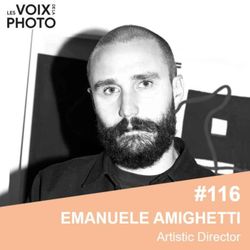
116. #116 Emanuele Amighetti (Artistic Director) ENGLISH EPISODE
27:17||Saison 1, Ep. 116In this episode, we talk with Emanuele Amighetti, an italian creative director whose journey began in Como, Italy, influenced by a love of punk music and literature. Initially studying classical and Middle Eastern studies, he transitioned to photography, telling stories of marginalized communities. After working with international press, he moved into art direction, collaborating with his wife and embracing new media. We discuss his time at Esquire and Hearst, his creative process, and the evolving challenges in photography today. He is now the Executive Image Director at Harper’s Bazaar Italia. Enjoy listening!1’30 - Grew up in Como with parents in banking; father loved music (punk), mother literature. Both passions influenced him.3’15 - Initially studied classical and Middle Eastern studies.4’30 - Drawn to photography by his artistic interests and desire to tell stories of marginalized communities. Worked with American and French press.7’15 - Transitioned to art direction after losing motivation in photography. Influenced by social media and collaborations with his wife, an artist.9’20 - Joined Esquire Italy as Image Director, later Creative and Art Director at Hearst. Expanded the magazine’s vision beyond photography.12’35 - Described his role as a curator, conceptualizing ideas, forming teams, and translating concepts into practice.14’45 - Inspiration comes from daily life, travel, technology, and his team. Works with photographers globally, emphasizing teamwork.16’30 - Ensures coherence in projects, working with large teams and celebrities to create meaningful work with feeling.18’15 - Sees art direction as collaborative, a dialogue between artists, photographers, and his vision.19’30 - Noticed photography’s crisis due to social media and AI. Emphasizes the need for photography to evolve and integrate other media.23’00 - Believes photography still provides a unique sensation, necessary to visualize and capture the world.23’50 - Advice: Trust your vision, be passionate, and avoid imitation. For photographers, focus on storytelling and authenticity. Stay open to change.Emanuele Amighetti's Instagram: https://www.instagram.com/emanueleamighetti/Pour devenir partenaire du podcast : https://bit.ly/sponsoriserLVDLPSubscribe to the podcast newsletter: https://bit.ly/lesvoixdelaphotonewsletterStay updated with the podcast: https://lesvoixdelaphoto.fr/You can also find the podcast on Instagram, Facebook, and LinkedIn @lesvoixdelaphoto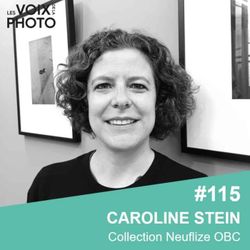
115. [BEST OF] #115 Caroline Stein (Collection Neuflize OBC)
04:43||Saison 1, Ep. 115-> Cet épisode est l'extrait d'un entretien. Vous trouverez l'entretien entier sur ce même compte.Caroline Stein, responsable du mécénat et de la collection photo chez Neuflize OBC, nous partage son parcours, depuis ses débuts en tant qu’éditrice chez Somogy jusqu’à son rôle actuel où elle gère une collection d'entreprise de plus de 1000 œuvres. Nous parlons de son approche des acquisitions d’art, des expositions qu’elle organise, et de son soutien à des projets comme les expositions au BAL et au Jeu de Paume. Bonne écoute !Le site de la collection Neuflize OBC : https://accueil.collection.neuflizeobc.fr/Pour vous inscrire à la newsletter du podcast : https://bit.ly/lesvoixdelaphotonewsletterPour suivre l'actualité du podcast : https://lesvoixdelaphoto.fr/Et vous pouvez retrouvez le podcast sur Instagram, Facebook et LinkedIn @lesvoixdelaphoto
115. #115 Caroline Stein (Collection Neuflize OBC)
01:09:26||Saison 1, Ep. 115Caroline Stein, responsable du mécénat et de la collection photo chez Neuflize OBC, nous partage son parcours, depuis ses débuts en tant qu’éditrice chez Somogy jusqu’à son rôle actuel où elle gère une collection d'entreprise de plus de 1000 œuvres. Nous parlons de son approche des acquisitions d’art, des expositions qu’elle organise, et de son soutien à des projets comme les expositions au BAL et au Jeu de Paume. Bonne écoute !1’30 – Caroline Stein évoque son parcours initial en littérature.8’00 – Caroline raconte sa première embauche chez les éditions Somogy, travaillant sur des catalogues d'expositions et son introduction au milieu muséal.9’53 – Elle décrit son immersion dans les institutions culturelles et les festivals à travers ses projets, dont Chroniques Nomades à Honfleur.11’00 – Caroline parle de son travail avec le collectif Planches Contact et sa collaboration avec des photographes sur des projets comme Made in China et Made in France.19’50 – Caroline explique la dynamique de Tendance Floue, un collectif inspiré par Magnum.23’30 – Elle décrit sa rencontre avec Jean-François Camp au festival photo de Vannes et son travail sur une exposition réalisée dans des conteneurs puis ses années chez le laboratoire Dupon.30’00 – Son arrivée chez Neuflize OBC en 2017, où elle intègre la banque pendant sa réorganisation et participe à la célébration des 20 ans de la collection d'art.39’00 – Caroline explique la vision derrière la collection Neuflize OBC, centrée initialement sur le portrait, puis évoluant vers des thèmes comme la figure humaine et la mémoire.45’00 – Elle partage son expérience sur le renouvellement des accrochages dans le cadre de la collection Neuflize OBC.52’00 – Caroline offre des conseils aux photographes sur la manière de soumettre un dossier à la fondation, avec des recommandations pratiques pour être efficace et pertinent.54’00 – Elle mentionne son implication dans le collectif Les Filles de la Photo et l’ouvrage Y voir clair dans l’écosystème de la photographie.55’30 – Caroline discute des mécénats et de l’importance des programmes pédagogiques dans le cadre de ses soutiens culturels à des institutions comme Jeu de Paume et La MEP.1’02’15 – Elle aborde les défis de travailler dans un établissement bancaire, notamment le lien à créer entre l’art et des collaborateurs souvent éloignés de ce milieu.1’04’00 – Caroline revient sur la médiation qui représente 80 % de son travail, un rôle clé pour valoriser la collection à la fois en interne et auprès des partenaires.1’06’00 – Elle conclut avec des conseils sur la gestion d'une collection d’entreprise, insistant sur l’importance de l’équilibre entre l’interne (collaborateurs) et l’externe (partenaires et publics).Le site de la collection Neuflize OBC : https://accueil.collection.neuflizeobc.fr/Pour devenir partenaire du podcast : https://bit.ly/sponsoriserLVDLPPour vous inscrire à la newsletter du podcast : https://bit.ly/lesvoixdelaphotonewsletterPour suivre l'actualité du podcast : https://lesvoixdelaphoto.fr/Et vous pouvez retrouvez le podcast sur Instagram, Facebook et LinkedIn @lesvoixdelaphoto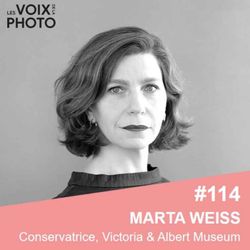
114. [BEST OF] #114 Marta Weiss (Victoria & Albert Museum) ENGLISH EPISODE
08:17||Saison 1, Ep. 114-> This episode is an extract from an interview. You will find the entire interview on this same account.Mara Weiss is the lead curator of the Victoria & Albert Photography Centre, completed in 2023 in London. In this episode, we talked about her studies at Harvard and Princeton and her projects as Curator of Photography at the Victoria and Albert Museum in London since 2007. We discussed developments she has observed in the field of museum photography, such as the integration of photography into permanent spaces like at MoMA, but not yet at the V&A, and the importance of the acquisition group, which not only enables more acquisitions but also takes on new roles, such as organizing events and travels with patrons. She also gave us some advice for people who want to become curators in a museum like her. I hope you enjoy this episode!Victoria and Albert Museum Photography Centre: https://www.vam.ac.uk/info/photography-centre?srsltid=AfmBOoqZSZoHt_zH-w0WkTrxPvSA0vbM_JfMgzoZeuYPCyhXZDN2IUl7Subscribe to the podcast newsletter: https://bit.ly/lesvoixdelaphotonewsletterStay updated with the podcast: https://lesvoixdelaphoto.fr/You can also find the podcast on Instagram, Facebook, and LinkedIn @lesvoixdelaphoto